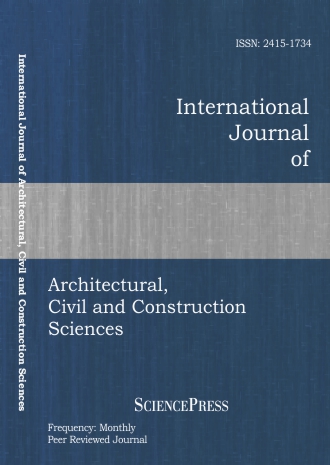
Scholarly
Volume:11, Issue: 5, 2017 Page No: 656 - 659
International Journal of Architectural, Civil and Construction Sciences
ISSN: 2415-1734
Experimental Investigation on Freeze-Concentration Process Desalting for Highly Saline Brines
Using the freeze-melting process for the disposing of high saline brines was the aim of the paper by confirming the performance estimation of the treatment system. A laboratory bench scale freezing technique test unit was designed, constructed, and tested at Doha Research Plant (DRP) in Kuwait. The principal unit operations that have been considered for the laboratory study are: ice crystallization, separation, washing, and melting. The applied process is characterized as “the secondary-refrigerant indirect freezing”, which is utilizing normal freezing concept. The high saline brine was used as definite feed water, i.e. average TDS of 250,000 ppm. Kuwait desalination plants were carried out in the experimental study to measure the performance of the proposed treatment system. Experimental analysis shows that the freeze-melting process is capable of dropping the TDS of the feed water from 249,482 ppm to 56,880 ppm of the freeze-melting process in the two-phase’s course, whereas overall recovery results of the salt passage and salt rejection are 31.11%, 19.05%, and 80.95%, correspondingly. Therefore, the freeze-melting process is encouraging for the proposed application, as it shows on the results, which approves the process capability of reducing a major amount of the dissolved salts of the high saline brine with reasonable sensible recovery. This process might be reasonable with other brine disposal processes.